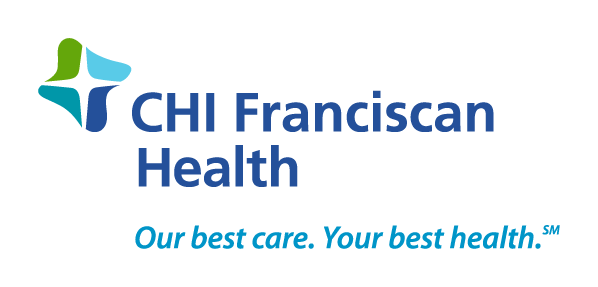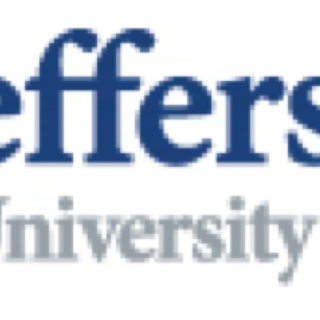Title Page
-
Conducted on
-
Prepared by
-
Location
Written Policies
-
Does staff have appropriate competencies/skill sets for food/nutrition services? Consider patient assessments, care plans, etc
-
^ Meal frequency?
-
Diet Manual; approved by medical staff/dietitian & current? Needs to have been published/revised within last 5 years PC.02.02.03 EP22
-
^ Diet ordering/patient tray delivery system? PC.02.02.03 EP7 and PC.02.01.03 EP1 for diet ordering
-
Do menu options meet patient needs & consider personal preference? PC.02.02.03 EP9
-
^ Nonroutine occurrences? e.g. parenteral nutrition, change in diet orders, early/late trays PC.01.02.01 EP3
-
Does the organization have a fulltime qualified dietitian or other qualified professional? If a dietitian or other qualified professional is not fulltime, interview staff to determine adequacy of the dietary director’s qualifications. HR.01.02.05 EP2
-
^ QAPI/IC program; integration of food/dietetic service?
-
^ Hygiene Practices for food service personnel? IC.02.01.01 EP1
-
Determine the relationship between the Dietary Director, & Lead Dietitian if the director is not a dietitian. Review the job descriptions— are their responsibilities clearly defined? CMS requirement for both roles to have necessary experience to serve population
-
^ Kitchen sanitation? IC.02.01.01 EP1
-
Did service director ensure the following policies/procedures CMS 482.28(a)(1) A0620: LD.04.01.05 EP3
-
^ Safe food handling? PC.02.02.03 EP6
-
ServSafe certification/license; if required, do the appropriate staff members have this? HR.01.01.01 EP3
-
^ Emergency food supplies? EM.02.02.03 EP3
-
Advanced: You can ask for recent health department inspection to provide baseline for whether issues are ongoing or isolated
-
^ Orientation, assignments, supervision & personnel performance? HR.01.04.01, HR.01.06.01, HR.01.07.01
-
^ Menu planning, purchasing, & essential record retention?
PHYSICAL ENVIRONMENT
-
Are areas kept clean/sanitary? IC.02.01.01 EP1
-
Is the area free of any signs of pests? If there are pests, has the organization taken steps to address the issue?
-
Kitchen equipment; is it in safe operating condition? If there is an issue, does the staff have a plan to address it? Manufacturer’s recommended periodic maintenance schedule or an acceptable Alternate Equipment Management (AEM) program should be followed. EC.02.06.01 EP26
-
Is cookware/dishware stored in a clean, dry location? Food contact surfaces should be protected from splash, dust, other contamination, etc. typically being stored at least 18” from the floor. IC.02.01.01 EP1
-
Are dishes/utensils air dried to prevent crosscontamination? IC.02.01.01 EP1
-
Is all kitchen equipment regularly used? Unused equipment should not be stored in food service areas due to increased risk for pests
-
Are wet wiping cloths stored in an approved sanitizing solution & washed daily? IC.02.01.01 EP1
-
Is garbage/refuse properly disposed of? EC.02.02.01 EP19
-
Are food carts clean & in good repair? They should be sanitized after every meal. IC.02.01.01 EP1
-
Are sinks clear from items that can be contaminated from splashes? e.g. paperwrapped straws
-
Advanced: You can ask for a question regarding pest control services that have been accomplished
-
REFRIGERATOR PC.02.02.03 EP11 for food storage
-
Refrigerator temps; have they been monitored?
-
Is uncooked food (chicken or other meat) stored away from cooked food to prevent contamination? e.g. not stored over cooked food
-
Are frequency of temp checks & limits (41º or lower) maintained as per policy?
-
Is prepared food covered & labeled with expiration date?
-
Is there a process if the temp is inadequate? If possible, validate the process was followed
-
Are open containers labeled with expiration date?
-
Is there precooked food in the cooling process? Is the organization meeting requirements? Food should be cooled to 70º within 2 hours & to 41º within 4 & total cooling time should not exceed 6 hours. P
-
Are all items in date and not expired
-
Is the locking mechanism on the door in proper working condition?
-
^ Is there a process/mechanism in place to prevent staff from being locked in? Can the mechanism be accessed, & is it in working order? It shouldn’t be blocked or have any ice buildup
-
Is food stored away from soiled areas & rust?
-
Is food stored to allow for ventilation?
-
^ Is staff aware of how to use safety process/mechanism in emergency?
-
FREEZER PC.02.02.03 EP11 for food storage
-
Freezer temps; have they been monitored?
-
Is the freezer free of any ice buildup?
-
Are frequency of checks & temp limits maintained as per policy? Temps should ensure that food remains solid
-
Are items labeled appropriately with expiration dates? There should be no expired items
-
Is there a process if the temp is inadequate? If possible, validate the process was followed
-
If there is precooked food, is the cooling process sufficient? See refrigerator note above
-
Is food stored away from soiled areas & rust?
-
Is the locking mechanism on the door in proper working condition?
-
Is food stored to allow for ventilation?
-
^ Is there a process/mechanism in place to prevent staff from being locked in? Can the mechanism be accessed, & is it in working order? It shouldn’t be blocked or have any ice buildup
-
Is the freezer free from any signs of freezer burn/food discoloration?
-
Are raw foods stored properly? There should be no signs of them dripping on other foods
-
^ Is staff aware of how to use safety process/mechanism in emergency?
DRY STORAGE
-
Are there any expired items? PC.02.02.03 EP11
-
Is the area clean, dry, & well ventilated? This will help with humidity & prevent growth of mold/bacteria. PC.02.02.03 EP11
-
Are canned goods properly sealed? PC.02.02.03 EP11
-
Is food stored away from sources of heat/light? This helps preserve shelf life. PC.02.02.03 EP11
-
Does the kitchen have food storage items/plans for disaster preparedness? A 96hour stockpile isn’t required for emergency operations. The kitchen should have a role in response to an event, & it should correspond with the organization’s Emergency Operations Plan. EM.02.02.03 EP3
-
Are food containers stored off the floor & away from walls to allow for adequate circulation? e.g. 6” above floor, protected from splashes PC.02.02.03 EP11
FOOD PREP ASSESSMENT Interview
-
Advanced: Ask about ladle size & how to determine appropriate proportions
-
Foodborne illness; does the organization take prevention measures? Question if cases have occurred/been resolved. IC.01.03.01 EP1
-
Advanced: Conduct HAZMAT tracer for corrosive limeaway used for decalcifying automated dishwashers. Assess adequacy of eyewash station, PPE usage, SDS, staff knowledge, etc
-
Sick employees or those with open wounds; is there a procedure for them? PC.02.02.03 EP6 (not sure this can be associated)
-
Thawing food; is there a process? Validate the staff is following the process during observation. Food should not be thawing at room temperature & can be thawed under cold running water or the refrigerator. PC.02.02.03 EP6
LIFE SAFETY
-
Is the kitchen in good repair? e.g. lack of broken floor tiles, delamination, flaking walls, etc
-
Are the gaskets intact for kitchen entry/delivery doors to prevent entry from pests?
-
Do sprinkler heads have adequate 18” clearance? Ensure racks perpendicular to walls do not encroach 18” open space for sprinklers. NFPA 1012012: 18.3.5.1; 19.3.5.3; 9.7.1.1; NFPA 132010: 8.5.5.2; 8.5.5.2.1; 8.5.5.3 LS.02.01.35 EP6
-
Eyewash station; if required, is it in good working order & located away from hazards?
-
^ Can staff access eyewash station within 10 seconds of hazardous material storage/usage area?
-
Evaluate sprinkler head obstructions in BOTH refrigerators & freezers. Be wary of surface mounted fluorescent light fixtures close to sprinkler heads as this does not follow the 18” rule. Refer to attachment for specific criteria
-
^ Has the eyewash inspection log been kept up to date?
-
Natural gas; does the organization use this?
-
Soda fountain machine; is the CO2 secured?
-
^ Is a gas valve accessible for emergency shutoff & do staff know its location/operation?
-
Are sewage/pipelines free from signs of water damage?
-
^ Is emergency shutoff valve properly labeled?
-
Deep fat fryer; is there a K fire extinguisher within 30’? NFPA 96–2011 10.10.1; NFPA 10–2010, 6.6.1; 6.6.2 LS.02.01.35 EP11
-
Evaluate the hood system
-
^ Is the hood clean with no grease buildup? NFPA 962011 11.6.2
-
Deep fat fryer; is it installed with at least a 16” space between the fryer & surface flames from adjacent cooking equipment? NFPA 96–2011 12.1.2.4
-
^ Are the steel filter baffles all installed with no gaps & are they in the proper direction? NFPA 962011 6.2.3.1; 6.2.3.5
-
K fire extinguisher placard identifying need to activate the fixed suppression (ansul) system before using the extinguisher? NFPA 962011 10.2.2 LS.02.01.35 EP11
-
^ Is grease producing equipment located properly under the hood? NFPA 962011 5.2
-
Suppression system; does staff know how to use it? Instructions for manual operations should be conspicuously posted & reviewed by staff. NFPA 962011 11.1.4
-
^ Are extinguishing heads pointed properly toward the cooking surface?
-
Electrical panels; are they clear from obstruction? There should be 36”
-
Compressed gas cylinders; are they properly secured? NFPA 992012 11.3; 11.6.2.3
-
Fire Evacuation & Relocation Plan; is the staff knowledgeable? NFPA 1012012: 18/19.7.1; 7.2










